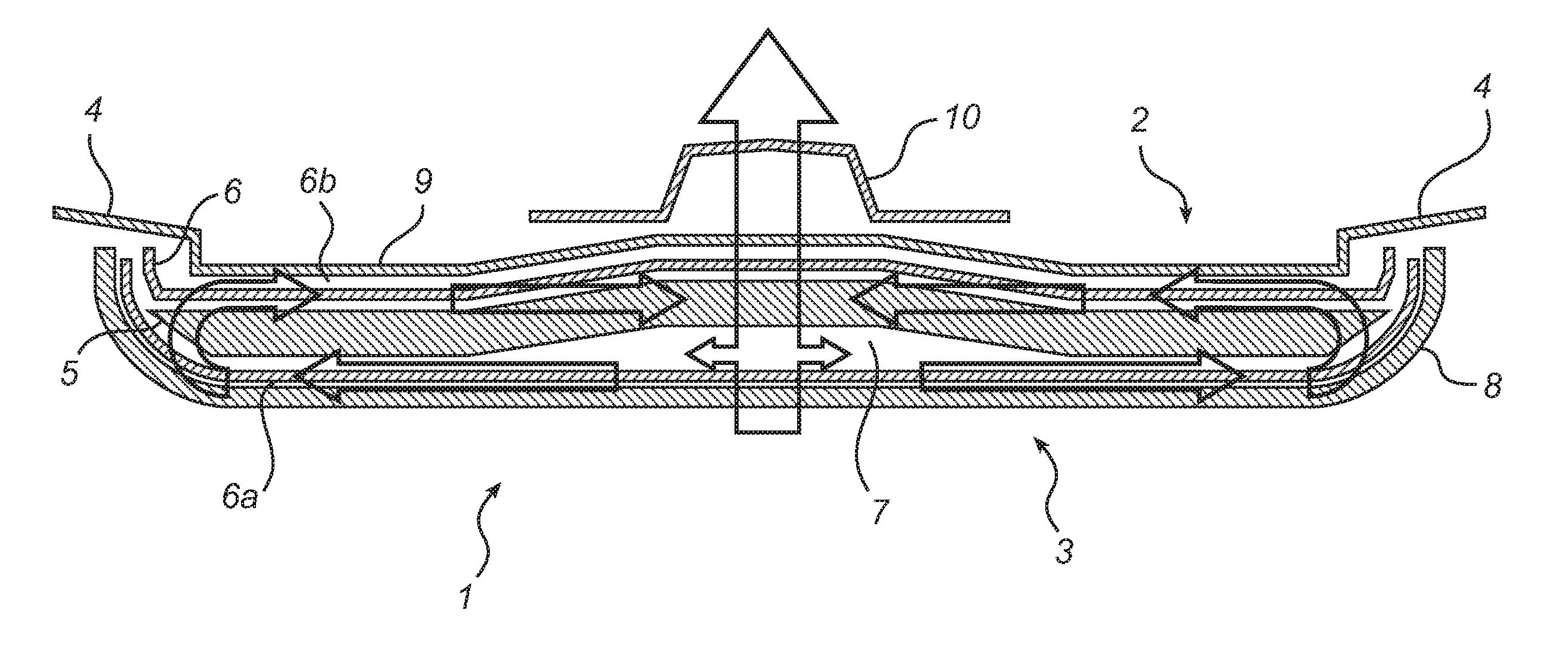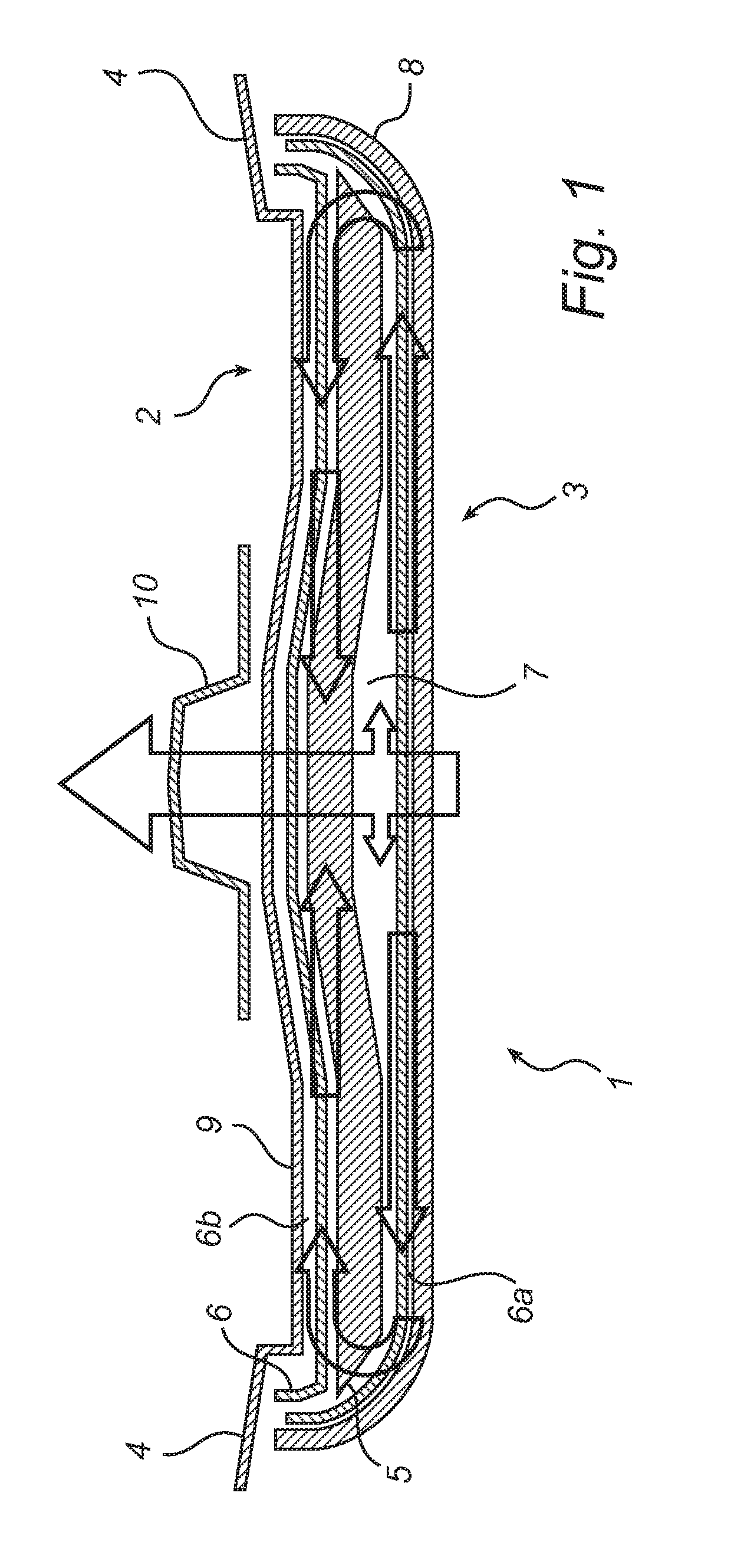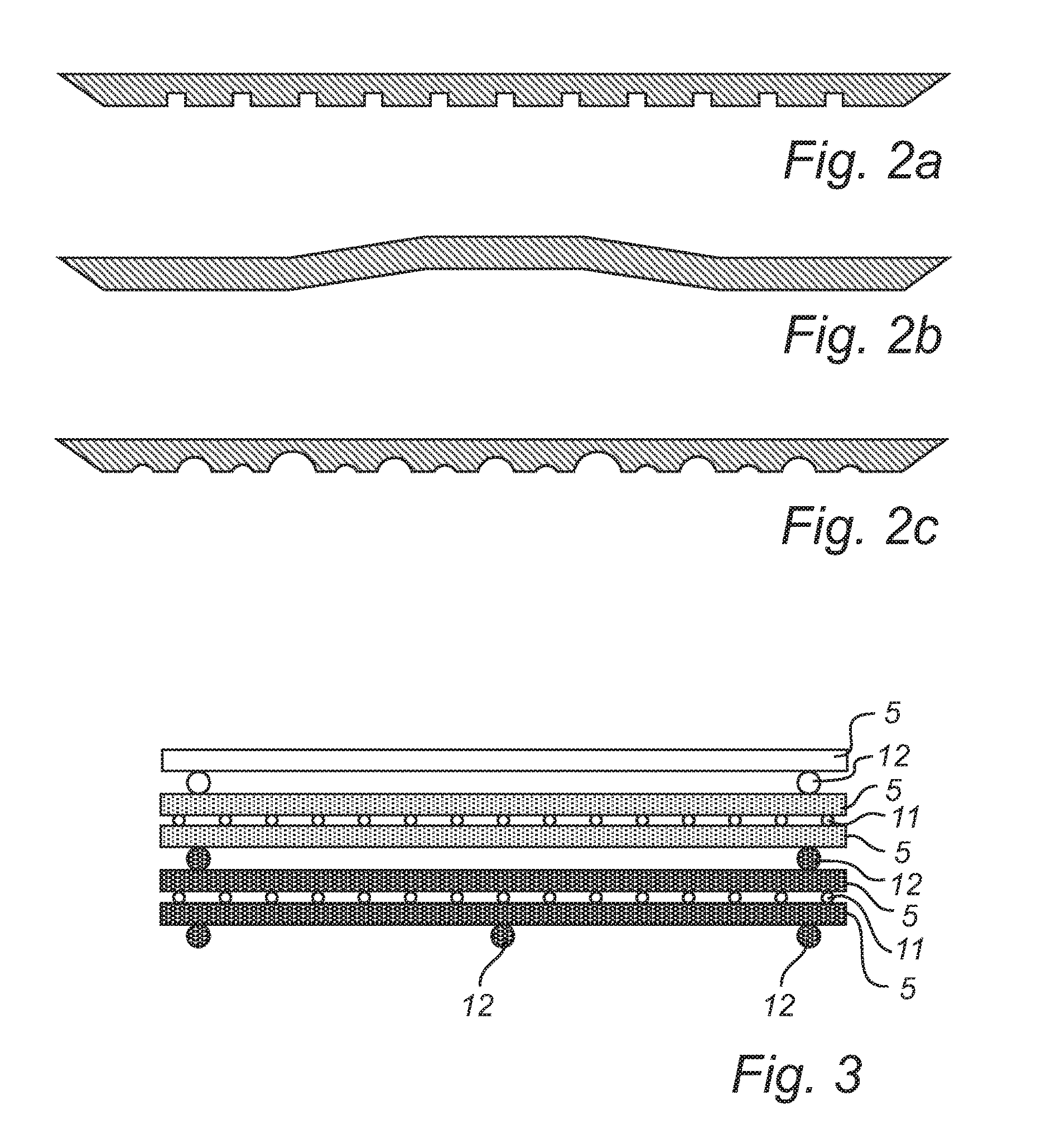Laminate pre-form for a wind turbine blade
a technology of laminated preform and wind turbine blade, which is applied in the manufacture of final products, machines/engines, other domestic articles, etc., can solve the problems of increasing the elasticity of laminate in an undesired fashion, and the collapse of evacuation channels, so as to reduce the occurrence of gas pockets
- Summary
- Abstract
- Description
- Claims
- Application Information
AI Technical Summary
Benefits of technology
Problems solved by technology
Method used
Image
Examples
Embodiment Construction
[0038]With reference to FIG. 1, the present invention relates to a pre-consolidated laminate pre-form 1 having a top side 2 and a back side 3 extending between respective edge portions 4.
[0039]The laminate pre-form 1 comprises a plurality of layers of fibre tows 5 extending in a length direction of said laminate pre-form 1.
[0040]Different types of fibres, such as glass fibres, carbon fibres, synthetic fibres, bio fibres, mineral fibres, and metal fibres can be used depending on the final use of the pre-form. For reinforcing a large composite structure, which is subject to significant stress, such as a wind turbine blade spar, carbon fibres are preferred, since they are much stronger than e.g. glass fibres. The pre-form comprises fibres in fibre tows which are bundles of a large number of individual fibres, i.e. bundles of unidirectional fibres.
[0041]Each fibre tow may comprise fibres which are twisted in a manner known, e.g. from rope making etc., or may comprise fibres arranged sid...
PUM
| Property | Measurement | Unit |
|---|---|---|
| porosity | aaaaa | aaaaa |
| radius | aaaaa | aaaaa |
| diameter | aaaaa | aaaaa |
Abstract
Description
Claims
Application Information
 Login to View More
Login to View More - R&D
- Intellectual Property
- Life Sciences
- Materials
- Tech Scout
- Unparalleled Data Quality
- Higher Quality Content
- 60% Fewer Hallucinations
Browse by: Latest US Patents, China's latest patents, Technical Efficacy Thesaurus, Application Domain, Technology Topic, Popular Technical Reports.
© 2025 PatSnap. All rights reserved.Legal|Privacy policy|Modern Slavery Act Transparency Statement|Sitemap|About US| Contact US: help@patsnap.com



